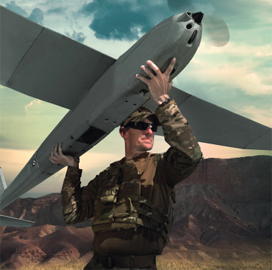AeroVironment has unveiled two optional features for its portfolio of small tactical unmanned aircraft systems that are equipped with electro-optical/infrared imaging and plug-and-play components.
The company said it offers the Smart 2500 lithium-ion battery as an option for Puma LE UAS customers to utilize the aerial platform up to 6.5 hours in land or maritime operations.
According to AeroVironment, the power pack is designed to have a capacity of 24.5 ampere hours and allows the ultra-lightweight aircraft to operate at a range of up to 37.3 miles when used in conjunction with a long-range tracking antenna.
The all-environment Puma 2 and 3 AE vehicles now include a bungee launcher system option when the hand-launch process for deploying UAS is not a practical choice due to environmental conditions.
Operators can install BLS in various soil types or mount the platform to fixed objects and get the equipment ready in less than 10 minutes, AeroVironment noted.




